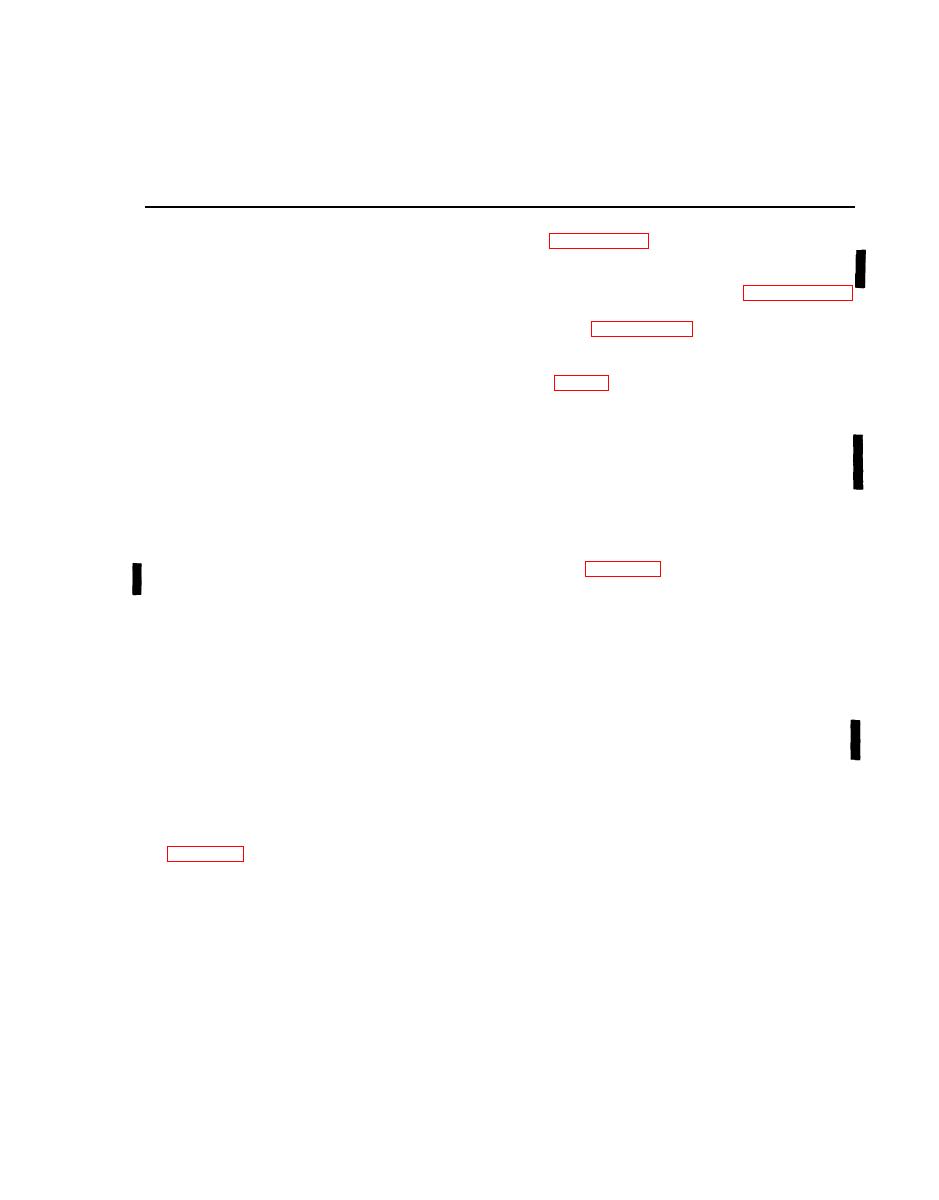 |
|||
|
|
|||
|
|
|||
| ||||||||||
|
|
 TM 11-6625-667-45/NAVAIR 16-30APM123-21TO 33A1-3-367-22
CHAPTER 2
FUNCTIONING
2-1. Block Diagram
ated in the decoder section for proper pulse posi-
tions. Paragraphs 2-2 through 2-5 cover the opera-
a. The test set evaluates the minimum perfor-
tion of these sections for system, identity, and
mance of aircraft installed transponder sets on a go-
emergency tests. Mode 4, self-test, and frequency-
no-go basis. It checks the receiving, decoding, cod-
power operations are described in paragraphs 2-7
ing, and transmitting functions and provides either
and 2-8, respectively. The power supply section is
an accept or reject indication. A coded interrogation
described in paragraph 2-9.
signal is transmitted, and the transponder reply is
analyzed. Incorrect or no replies result in a reject in-
2-2. Encoder Circuit
dication, and an accept indication will result when
all transponder functions are performing within
limits, With internally generated pulse-pairs, the
The encoder is located in the transmitter section
test set can interrogate in modes 1, 2, 3/A, TEST,
and generates the modes 1, 2, 3/A, TEST, and C
and C. In addition, a sidelobe-suppression test can
pulse-pairs to modulate the transmitter rf output
circuit. The interrogation sidelobe suppression
be performed during interrogations. Mode 4 inter-
rogation pulses are supplied by external mode 4
(ISLS) pulse also can be selected for transmission,
During mode 4, however, the encoder circuit is used
equipment for transmission. Radiation tests are
performed with an adjustable antenna mounted on
only to shape interrogation pulses from external
equipment. Certain circuits are shared with the de-
the front panel. Tests can also be performed by di-
coder section and are described in the following
rect coupling, by using Cable Assembly, Radio Fre-
paragraphs. Figure 2-1 illustrates the timing.
quency CG-409H/U (radiofrequency (rf) cable) and
a. Prf Generator. The prf generator controls the
Fixed Attenuator CN-1088A/U (attenuator), or us-
ing Test Hood, Antenna MX-4396/APM-123(V).
repetition rate of the encoder circuit, and all test set
Replies are analyzed for minimum power level, fre-
operations. It produces 2.17-millisecond pulses at
230 + 510 pulses per second (pps). These pulses
quency, coding, and pulse position limits. A reply
rate evaluator is included to provide an accept indi-
are applied to encoder line-drive generator ISSI and
encode enable IFFI, and to readout DFF5 during
cation when 80 percent or more transponder replies
self-test operations.
are correct. The evaluator gives a reject indication
when 50 percent or less transponder replies are cor-
b. Pulse-Pair Generator.
(1) Encoder enabling. Encode enable IFFI en-
rect. When the percentage of correct replies falls be-
tween 50 and 80 percent, the accept-reject indica-
ables the P1-P3 pulse gating circuits. The trailing
edge of the 2.18 millisecond pulse from the prf gen-
tors may give unsteady (flickering) indications. The
reply evaluation is provided on a continuous basis
erator sets this flip-flop, and a positive enable volt-
and requires approximately 1/8 second (50 pulse repe-
age is then applied to the gates.
tition frequency (prf) periods) to change from an ac-
(2) Pulse-pair generation. The pulse-pair gener-
cept to a reject indication.
ation operation is started simultaneously with the
encoder enabling. Encoder line-drive generator
ISSI is triggered by the trailing edge of 1, the 2.18-
of the major functional sections and their major cir-
millisecond pulse from the prf generator. A nega-
cuits. The power supply section provides direct cur-
tive 0.7-microsecond pulse is produced, and is gated
rent (dc) power to all other sections. The transmit-
ter section produces the coded interrogations for
and inverted by line drive gate 2 (OR). (This OR gate
is also used during decoding operations.) The gated
transmission to the test set. The receiver section
encoder line-drive pulse is coupled by an emitter fol-
evaluates the test set reply frequency and power.
The receiver video pulse train output is then evalu-
lower (EF) to delay line A6DL1, which is also com-
Change 4
2-1
|
|
Privacy Statement - Press Release - Copyright Information. - Contact Us |